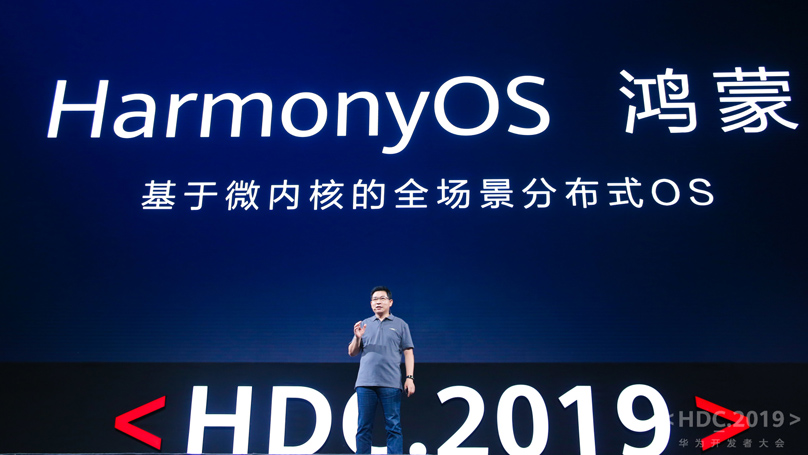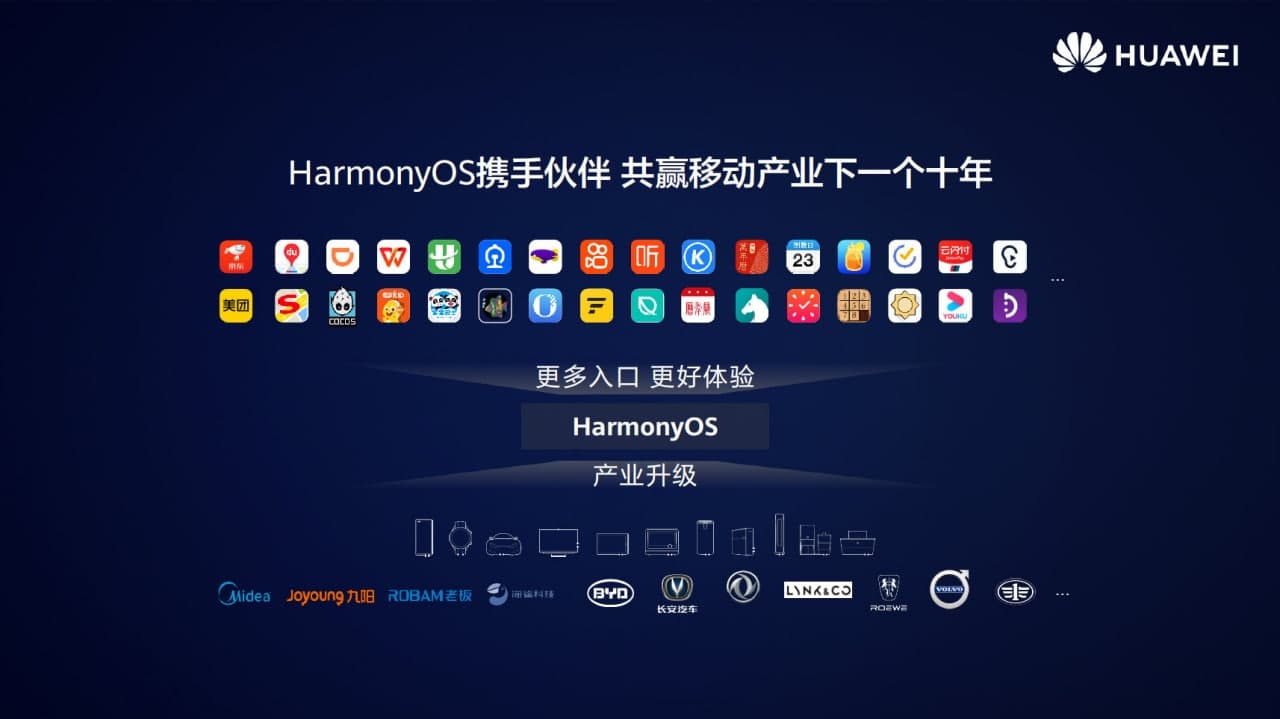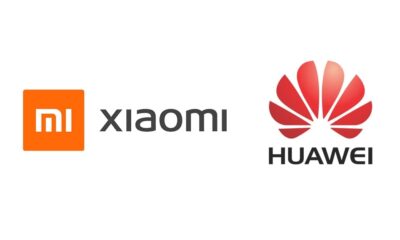HarmonyOS
HarmonyOS (HongMeng OS): Everything you need to know
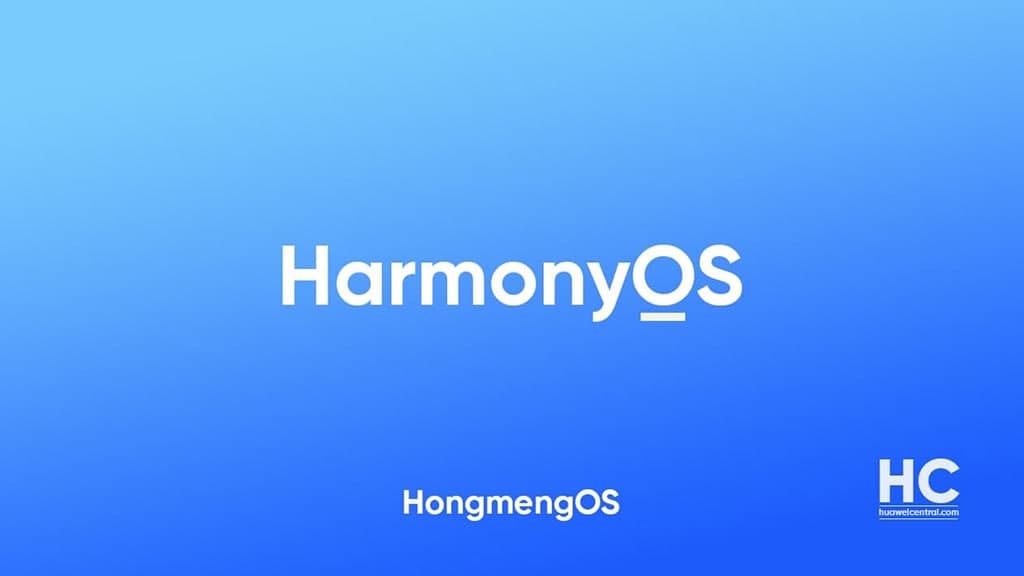
On May 20, 2019, we were the first to report about Huawei’s own operating system – Hongmeng. After a round of rumors and news, Huawei finally unveiled Harmony OS AKA HongMeng OS at Huawei Developer Conference 2019.
On September 10, 2020, Huawei unveiled HarmonyOS 2.0 at Huawei Developer Conference 2020 (HDC 2020) with added new distributed capabilities, including software bus, data management, and security. Huawei also introduced an adaptive UX framework that allows developers to quickly reach tens of millions of new devices and users.
On June 2, 2021, Huawei began a brand new chapter of HarmonyOS with version 2.0 with a tagline of “One as All, All as One”. Simultaneously, Huawei announced the beta testing along with the general rollout for various Huawei devices in the shape of a huge upgrade roadmap.
According to Huawei, HarmonyOS will become an important aspect of Huawei’s ecosystem and gradually make its way to most of its devices over the course of the next few years.
What is HarmonyOS?
HarmonyOS (HongMeng OS) is a new microkernel-based, distributed operating system designed to deliver a new user experience across all devices and scenarios.
“We’re entering a day and age where people expect a holistic intelligent experience across all devices and scenarios. To support this, we felt it was important to have an operating system with improved cross-platform capabilities. We needed an OS that supports all scenarios, that can be used across a broad range of devices and platforms, and that can meet consumer demand for low latency and strong security.” said Richard Yu, CEO of Huawei’s Consumer Business Group.
“HarmonyOS is completely different from Android and iOS. It is a microkernel-based, distributed OS that delivers a smooth experience across all scenarios. It has a trustworthy and secure architecture, and it supports seamless collaboration across devices. You can develop your apps once, then flexibly deploy them across a range of different devices.” Richard added.
HarmonyOS is based on the four technical features described below:
1. Seamless Experience:
By adopting distributed architecture and distributed virtual bus technology, HarmonyOS offers a shared communications platform, distributed data management, distributed task scheduling, and virtual peripherals. With HarmonyOS, app developers won’t have to deal with the underlying technology for distributed apps, allowing them to focus on their own individual service logic.
Developing distributed apps will be easier than ever before. Apps built on HarmonyOS can run on different devices while delivering a seamless, collaborative experience across all scenarios.
2. Smooth Performance:
HarmonyOS will address underperformance challenges with a Deterministic Latency Engine and high-performance Inter-Process Communication (IPC).
The Deterministic Latency Engine sets task execution priorities and time limits for scheduling in advance. Resources will gravitate toward tasks with higher priorities, reducing the response latency of apps by 25.7%. The microkernel can make IPC performance up to five times more efficient than existing systems.
3. More Secure:
HarmonyOS uses a brand-new microkernel design that features enhanced security and low latency. This microkernel was designed to simplify kernel functions, implement as many system services as possible in user mode outside the kernel, and add mutual security protection. The microkernel itself provides only the most basic services like thread scheduling and IPC.
Harmony OS’s microkernel design uses formal verification methods to reshape security and trustworthiness from the ground up in a Trusted Execution Environment (TEE).
Formal verification methods are an effective mathematical approach to validate system correctness from the source, while traditional verification methods, such as functional verification and attack simulation, are confined to limited scenarios. Formal methods, by contrast, can use data models to verify all software running paths.
HarmonyOS is the first OS to use formal verification in device TEE, significantly improving security. In addition, because the HarmonyOS microkernel has much less code (roughly one-thousandth the amount of the Linux kernel), the probability of an attack is greatly reduced.
4. All in One:
Powered by a multi-device IDE, multi-language unified compilation, and a distributed architecture kit, HarmonyOS can automatically adapt to different screen layout controls and interactions, and support both drag-and-drop control and preview-oriented visual programming.
This allows developers to more efficiently build apps that run on multiple devices. With a multi-device IDE, developers can code their apps once and deploy them across multiple devices, creating a tightly integrated ecosystem across all user devices.
The Huawei ARK Compiler is the first static compiler that can perform on par with Android’s virtual machine, enabling developers to compile a broad range of advanced languages into machine code in a single, unified environment. By supporting unified compilation in multiple languages, the Huawei ARK Compiler will help developers greatly improve their productivity.
HarmonyOS Features:
- New Home Screen
- Service Widgets
- Control Panel
- Service Center
- Smart Folder
- HarmonyOS Fonts
- Super Device
- Huawei Share
- Smart Home
- Task Center
- Better Performance
- App Guard
- Collaborative Security
Development Plan and Ecosystem: (Announced on August 10, 2019)
HarmonyOS 1.0 will be first adopted in its smart screen products, which are due to launch later this year. Over the next three years, HarmonyOS will be optimized and gradually adopted across a broader range of smart devices, including wearables, Huawei Vision, and head units for your car.
Version Timeline:
- HongmengOS 1.0 – 2019 (for TVs)
- HongmengOS 2.0 – 2020 (for PCs, SmartWatch/Bands, In-Vehicle Systems)
- HongmengOS 3.0 – 2021 (for Smart Speakers and Headphones)
- HongmengOS 4.0 – 2022 (for VR Glasses and more)
Open Source:
Huawei has planned to release HarmonyOS as an open-source platform, worldwide. Huawei will also establish an open-source foundation and an open-source community to support more in-depth collaboration with developers.
Ecosystem:
Huawei will open up and share its core capabilities in areas like connectivity, cameras, and AI. It will work closely with ecosystem partners to deliver apps and services that provide consumers top experience.
HarmonyOS 2.0:
Changes in HarmonyOS 2.0:
HarmonyOS 2.0 is officially open-source and developers will be able to gain access to emulators, SDK packages, and IDE tools.
The open-source project – OpenHarmony, which is donated to OpenAtom Foundation, is released and Huawei has started to collaborate with developers and industry partners to grow contribution to the development of HarmonyOS as open-source software.
HarmonyOS 2.0 open roadmap and it’ll support the type of memory devices:
- From September 10, 2020 – Device with 128KB to 128MB RAM (including IoT devices such as smart TVs, wearables, cars, and more)
- From April 21, 2021 – Device with 128MB to 4GB RAM
- From October 2021 – Device with over 4GB RAM
HarmonyOS 2.0 Beta release developers:
Huawei has pushed a number of new software versions for the HarmonyOS beta testings and the company keeps testing new software patches to solve the bugs and issues with internal functionalities of the software.
HarmonyOS Phone launch:
According to Richard Yu, Huawei’s Consumer Business Group (CBG) CEO, Huawei will launch the first HarmonyOS smartphone in 2021.
Wang Chenglu, President of the Software Department, Huawei Consumer Business Group (BG) said: Users who’ll upgrade to EMUI 11 will get a HarmonyOS update “as soon as possible”. Users will also have the option to purchase new HarmonyOS devices by next year (2021).
HarmonyOS 2.0 Developments:
On December 16, 2020, Huawei announced the mobile beta version of the HarmonyOS 2.0 for developers and on the same day, Huawei also opened HarmonyOS 2.0 test recruitment for the Huawei P40, Mate 30, and MatePad Pro devices in China.
Initial hand-on of the beta suggests that Huawei has made big changes in the base architecture of the HarmonyOS and made it the base of the EMUI 11 user interface to test its features.
However, a Huawei insider revealed that the company will make changes in the user interface with the stable rollout of HarmonyOS 2.0 for mobile devices.
Up until now, Huawei has held three rounds of developer beta recruitments, the recent one (second phase) includes Huawei Nova 6, Nova 7, and Nova 8 devices.
On June 2, Huawei announced the public release of HarmonyOS for flagship devices – Huawei Mate 40, Mate 30, P40, and MatePad Pro devices. Alongside the public beta, the company also opened HarmonyOS 2.0 closed beta for 28 other devices.
Huawei also rolled out stable HarmonyOS 2 for these devices on June 23 in China, followed by the second round of stable releases for the Nova 8 devices.
Meanwhile, the Chinese tech company is also conducting HarmonyOS 2 beta testing on different Honor devices including Honor 30, Honor V30, 20, and View20. However, more devices will join the beta program later on such as P20 and Mate 10.
Huawei has completed the installation of HarmonyOS 2 in Huawei Mate 40, Mate 30, Mate 20, P40, P30, P20 series, Nova 6, Nova 7, Nova 8 series, and more. However, there are more devices that will launch for more old devices.
Installations Mark:
- As of July 8th, Huawei officially announced to upgrade over 30 million devices with HarmonySO 2 operating system. However, the number of installations will continue to grow and it’ll reach more beta as well as regular users in the coming months.
- July 29, Huawei announced 40 million installation
- August 10, Huawei confirmed 50 million installation
- August 30, 70 million mark achieved
- September 1, 90 million installations
- September 13, HarmonyOS 100 million
- September 23, 120 million with 1 million users upgrading over this new operating every day
No announcement for global users:
Currently, Huawei has not announced any roadmap for the global users, which is quite a disappointment for the Huawei smartphone users in the global market.
Huawei aims to install HarmonyOS in over 300-400 million devices in 2021:
On December 16, 2020, Huawei also shared its plan to install HarmonyOS in over 300 million smart devices in 2021, and to complete this aim, the Chinese tech giant has partnered with various industry partners to include HarmonyOS on their respective devices.
HarmonyOS Launch Date Smartphones:
On June 2, Huawei officially launched HarmonyOS for smartphones, tablets, smartwatches, IoT devices, third-party consumer products, and more.
Previously, Richard Yu, CEO of Huawei Consumer Business announced that the company will launch HarmonyOS in April this year. As the company will also start upgrading its old devices and Huawei Mate X2 is also confirmed for the first batch.
HarmonyOS smartphones:
- On June 2, 2021, Huawei launched the Huawei Watch 3 and MatePad Pro with pre-installed HarmonyOS and a bunch of other previous flagships including Mate X2, Mate 40 with HarmonyOS pre-equipped.
- Huawei P50 series becomes the first flagship phone to launch with the pre-install HarmonyOS operating system.
- Huawei Nova 9 and Nova 9 Pro were the second new Huawei phones that comes with pre-installed HarmonyOS out of the box.
Over 100 devices will receive HarmonyOS:
On June 2, Huawei announced that it’ll install HarmonyOS in over 100 Huawei and Honor smartphones. This is a big plan and the company will upgrade almost every capable smartphone that can run HarmonyOS.
Fast Upgrades: For your information, Huawei has already completed over 50 percent of the HarmonyOS upgrade plan in China.
HarmonyOS Story Timeline (Past from the beginning):
May 21, 2019, Few More details landed:
New information revealed that Huawei’s OS is based on Linux and Hongmeng name is related to Chinese mythology. That fits in the lineup of names like processor series “Kirin” which is also derived from the name of a mythical chimerical creature ‘Qilin’.
Also, This OS will be used as a universal operating system for multiple platforms including smartphones and notebooks.
May 21, 2019, Problems with early application ecosystem:
Apart from an operating system, there’s always a need for an application ecosystem that is tagged with several problems including compatibility and bugs, please read the full article here where we’ve highlighted Huawei’s main issues in the development of applications to support this new OS.
May 21, 2019, First glance at Availability and Compatibility:
According to Huawei’s consumer business CEO Yu Chengdong, Huawei’s first-ever self-developed operating system will soon be launched this fall at the earliest and no later than spring next year. Interestingly, the new Huawei OS will be compatible with all Huawei phones, tablets, TV, and wearable devices.
He also revealed that Huawei’s OS is also compatible with all Android applications and all web applications.
May 23, 2019, Huawei CEO’s interview:
Huawei’s CEO again confirmed the launch date to CNBC, that Huawei’s operating system could be ready by the fourth quarter of this year and a version for the global market in the first or the second quarter of 2020.
This sentence has also grown possibilities that the company may come up with a different name for the global market but not confirmed by the official at that time.
He also said the operating system will support all android apps and come with its “App Gallery” as a default app store.
However, the Huawei executive stressed that the company will only launch its operating system if it will receive a permanent ban from using Google or Microsoft products.
May 24, 2019, Huawei registered “Hongmeng” trademark in China:
Huawei has registered trademarked for “Huawei Hongmeng” from China’s Trademark Office of national intellectual property administration with an application submission date of Aug 24, 2018, which was publically announced on May 14, 2019, and the duration of this registration is valid from May 14, 2019, to May 13, 2029.
The application is registered under multiple categories, including – Operating System Program, Computer Operating Program, Computer Operating Software. All of these categories confirm that “Hongmeng” is the name of Huawei’s operating system.
Moreover, the categories also include – smartphones, tablets, laptops, and more, showing that the company has prepared it for all its devices ecosystem, which we’ve also reported about.
If you are interested in checking the trademark application details please visit the original article here.
May 28, 2019, Huawei registers ARK in Europe:
Huawei has registered the “Huawei ARK OS” trademark at EUIPO, on May 24, 2019, and submitted in the same categories including Operating System.
It looks like we could have a global name for the “Hongmeng OS”. The Huawei ARK OS could be the name of the upcoming Huawei OS, which will work on all the devices globally, except China.
May 28, 2019, There are no such statements at the moment:
There are fake reports that said Huawei’s self-developed operating system will be 60% faster compared to Android OS and will also support IOS apps.
As of now, according to our information, we want to confirm that there are no such statements made by any Huawei executive or official regarding these subjects.
May 29, 2019, Huawei filed new UI designs patent
On March 26, 2019, Huawei filed a design patent at DPMA (German Patent and Trademark Office) and published on May 14, 2019, the same day as Huawei filed a trademark for “ARK OS”.
Check more details in a dedicated article here.
June 2, 2019, Huawei is testing Hongmeng OS and its compatibility with Android Apps
A report revealed that Huawei has allegedly shipped 1 million smartphones with the software onboard for testing, and with the compatibility to run all Android applications.
Hongmeng OS will come with increased security functions.
Rosenblatt Securities revealed in a smartphone supply chain report that Huawei has allegedly shipped 1 million smartphones with the software on board for testing, with the software also said to be compatible with all Android applications and has “increased security functions to protect personal data.”
June 3, 2019, Hongmeng OS to launch in September inside Huawei Mate 30 Series
June 7, 2019, Google thinks Huawei’s OS would be more susceptible to being hacked
Google believes that the Chinese company can not provide the level of security it has for the Android OS. A Huawei-modified version of Android OS would be more susceptible to being hacked.
June 7, 2019, Huawei to launch ‘Hongmeng OS’ in Q3 2019: Report
Huawei could launch a new self-made OS in Q3 2019. The name could be “Hongmeng OS” in China and will be known as “Ark OS” globally,
June 8, 2019, Exclusive: Huawei registers “HongMeng” trademark all around the globe
we’ve confirmed that Huawei has filed the “HongMeng” trademark applications in almost every possible intellectual property organizations around the globe.
June 13, 2019, Hongmeng is expected to launch in October, not ready for flagship phones: Analyst
Huawei’s self-developed operating system identified as ‘HongMeng‘ is yet to unveil by the company but a well-known industry analyst says this OS will be coming in October featuring in low-end devices.
June 14, 2019, Hongmeng OS reportedly in preparation for being launched
Andrew Williamson, vice president of Huawei’s public affairs and communications, said in an interview that the company will “presumably” trademark Hongmeng, which he said has likely been rolled out to a million devices in China.
Xiao Ran, Vice President of Huawei’s Strategy and Industry Development, said that Huawei Ark Compiler will be officially open source in August this year and also invited partners and applications to join its ecosystem and create apps based on Ark compiler.
June 27, 2019, Huawei should develop Hongmeng OS ‘Open Source’: Qihoo 360 Chairman
In 2019 Nanjing Tech Week, Zhou Hongyi, Chairman and CEO of Internet security company Qihoo 360 Technology, delivered a speech, saying Huawei can develop Hongmeng operating system in an open-source platform, and similar to the Android OS, Hongmeng can easily be spread throughout China’s IT sector.
July 5, 2019, Breaking: Huawei is testing Hongmeng OS in Mate 30, planning to launch together
Huawei is inviting people to test its operating system on a new device (possibly Huawei Mate 30). The email also mentioned that the company is planning to release the operating system alongside Huawei Mate 30 series.
Frech ‘Le Point’ magazine posted an interview of Huawei Founder and CEO, Ren Zhengfei, who talked about the company’s business and issues with the U.S., as well as the company’s self-developed Operating System.
Founder Ren told in an interview published on French Magazine “Le Point”, compared to Apple and Google, we still lack a good application ecosystem. That will take a few years to be established at a high level with the help of developers.
July 8, 2019: Breaking: Here are the leaked features Huawei is bringing to Hongmeng OS
Huawei has recently been recruiting internal testers in China to test its software in the name of ‘new features software’ testing, as one of the testers has contacted Huaweicentral.com and revealed some of the key feature details of that software on condition of anonymity.
July 12, 2019: Android is still the first choice, undecided on Hongmeng OS
Huawei Chairman Liang Hua said the company still prefers Android over its self-developed OS.
Recently, we’ve seen variations in Huawei’s announcement regarding its self-developed operating system, the OS that expected to replace Android in its device ecosystem but now it seems like the company is trying to hide something away from us on this matter.
July 17, 2019: Hongmeng OS to be used in Honor TV, potential launch at HDC 2019: Industry Source
Since the start of Hongmeng OS’ story, there are different statements made by the company officials that differentiate from each other on this subject and creates infinite confusion but in the midst of all of this misconception now we have got a new report that hints the company is planning launch this OS in its upcoming smart TV.
July 19, 2019: Hongmeng OS is not for smartphones, it’s for industrial solutions: Huawei Director
Huawei’s self-developed operating system reportedly called as Hongmeng OS is widely speculated to be a replacement of Android but this allegation has already been denied by two Huawei executives and now we have a new statement from a Huawei that also confirms the denial.
Huawei previously confirmed that Ark Compiler will be a topic of discussion at Huawei Developer Conference 2019 and today the company has dropped a hint that may create some high hope for Huawei fans waiting to see something new.
July 30, 2019: Here’s some clarification on Hongmeng OS and its future in Huawei’s device ecosystem
We’ve been arguing about the fact that Huawei has also developed Hongmeng OS for smartphones but the company has denied it and today we’ve got some real light on this matter.
Although top executives from Huawei has denied that they’ve not developed for Hongmeng OS for the smartphones but a new report has once again started the conversation on Android’s alternative.
August 9, 2019: Huawei officially announced Harmony OS/Hongmeng OS
August 9, 2019: Breaking: Harmony/Hongmeng OS is open source
August 9, 2019: Huawei says Harmony/Hongmeng is ready for smartphones but still want to use Android
August 9, 2019: HarmonyOS/Hongmeng OS can run Linux, Unix, Web and Android operations
August 10, 2019: HarmonyOS: Here are the four technical features that defines this Operating System
August 10, 2019: Harmony OS: Here’s the roadmap for developer plan and ecosystem development
August 10, 2019: Huawei will invest $1 billion to build HarmonyOS’s app ecosystem, will also cut intake fee from developers
August 10, 2019: Honor Vision with HarmonyOS officially unveiled, check out the price
August 4, 2021:
Huawei rolling out a major software update for the HarmonyOS powered devices that includes big changes in Control Panel, Service Center, Notification Center, and more. Read here
Follow the after feeds here.
HarmonyOS
TAILG launched new scooter with HarmonyOS
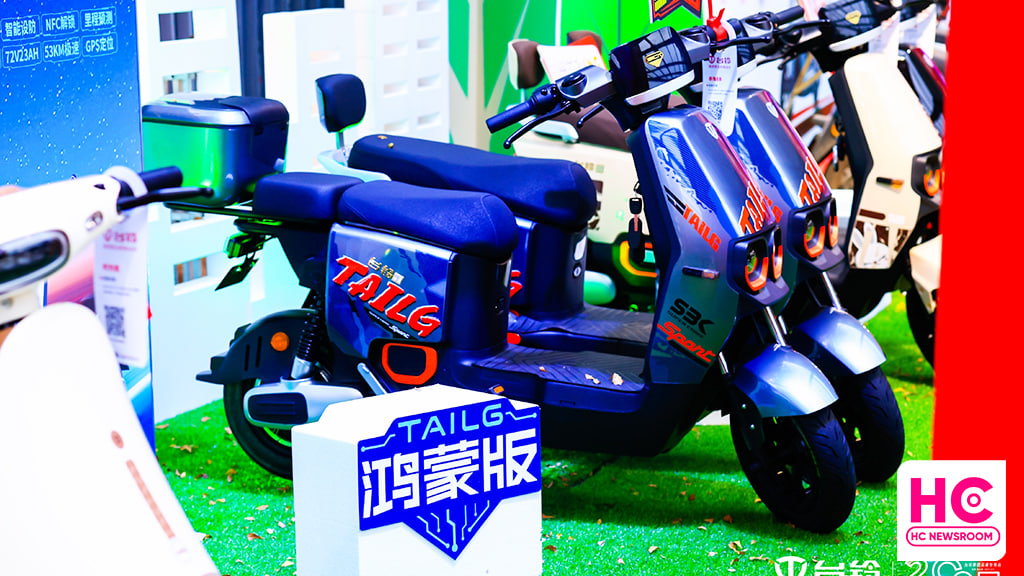
TAILG has launched a brand new electric scooter, which is powered by the HarmonyOS operating system and an all-around stylish look to provide a better experience for consumers.
It has a custom-made avant-garde handlebar, as well as an exclusive smart touch screen, which can display various driving data of the vehicle in real-time. It also equips with a variety of smart unlocking features, including one-key ignition.
The latest TAILG brings HarmonyOS features such as APP control, NFC unlocking, mileage prediction, smart fortification, and vehicle inspection. The TAILG HarmonyOS electric scooter packs a 72V23AH graphene battery, a 1000W cloud-powered motor, and a GPS positioning system.
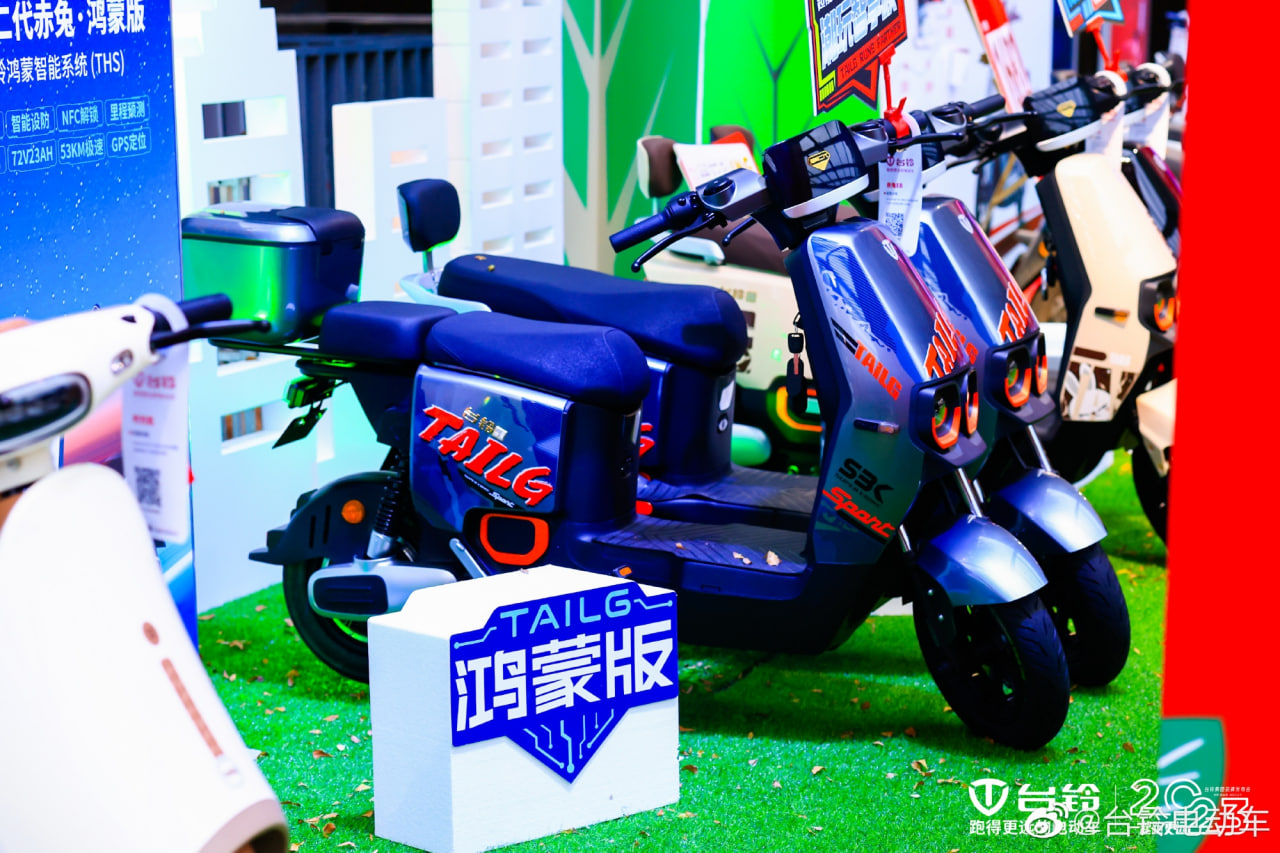
Looking at the price segment, the TAILG HarmonyOS scooter starts at 3899 yuan, and the high-end version is priced at 4588 yuan. This new electric scooter will be sold in offline stores across China.
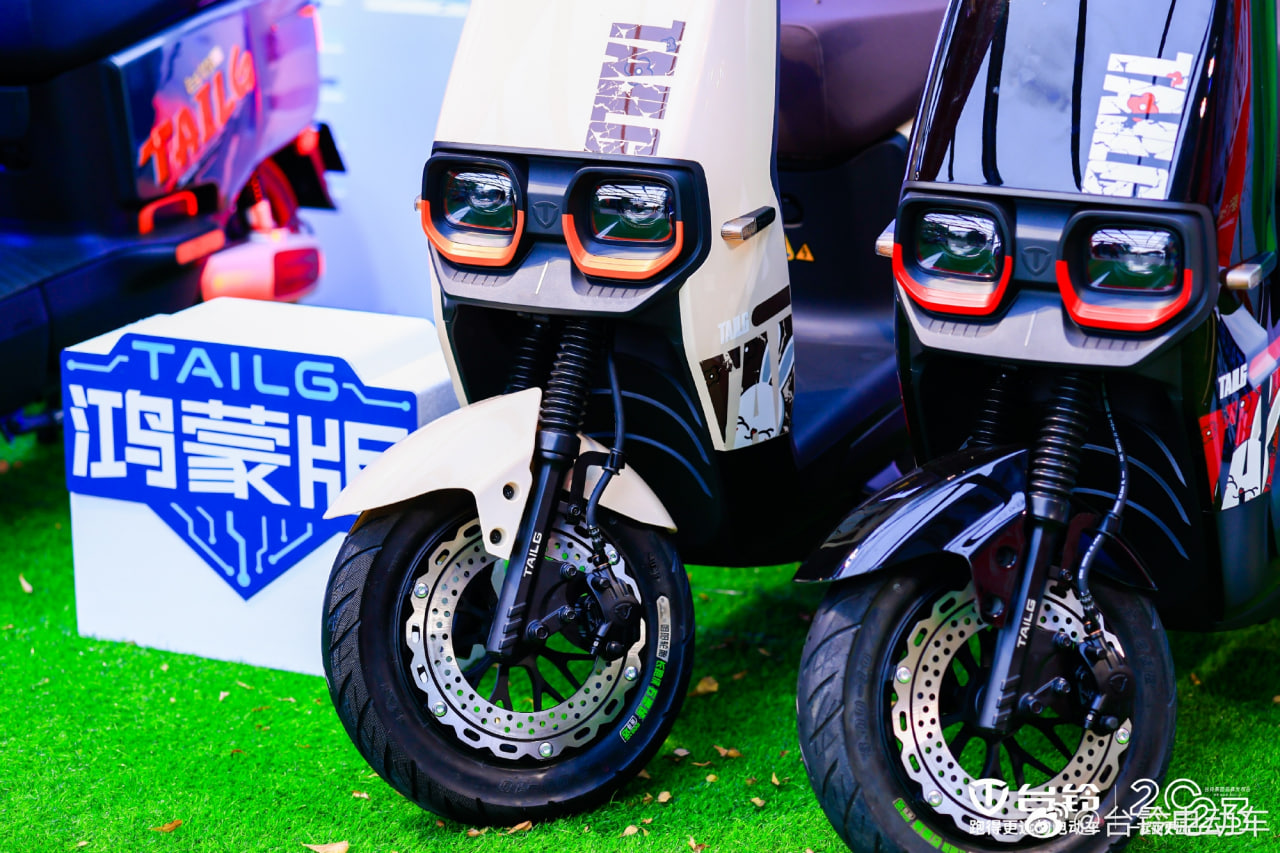
Last year in August, TAILG and Huawei announced cooperation to upgrade electric vehicles, the two companies will establish a joint innovation laboratory to conduct research on IoT and other technologies. This will also allow both firms to achieve technological advantages.
Established in 2004, TAILG is an enterprise specializing in R&D, manufacturing, sale, and service of new energy electric vehicles, Its products cover electric bikes, electric scooters, electric special bikes, electric tricycles, and other vehicles. It has an annual production capacity of 12 million vehicles and more than 30,000 stores exclusively in China.
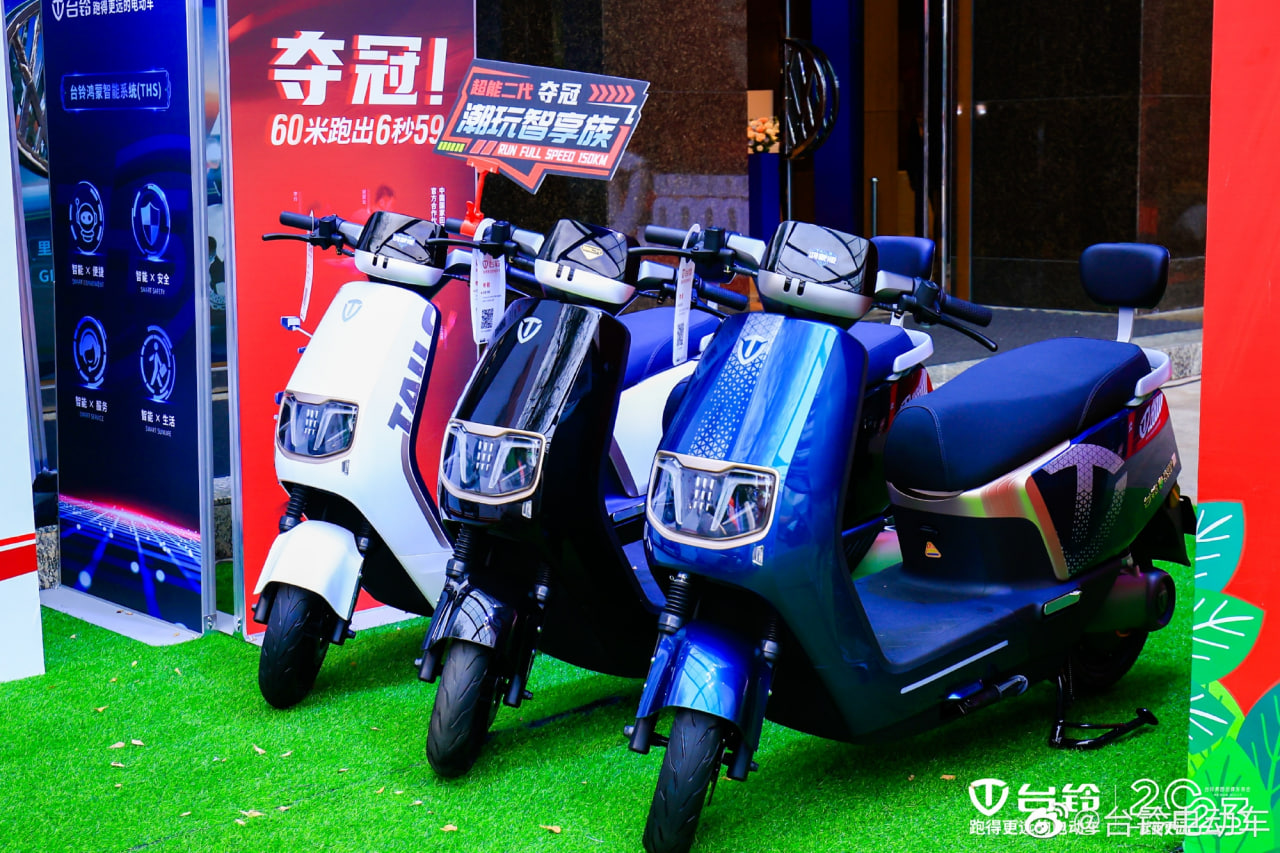
(via – Sina Tech)
HarmonyOS
HarmonyOS 3.1 Developer beta open for smartphone users
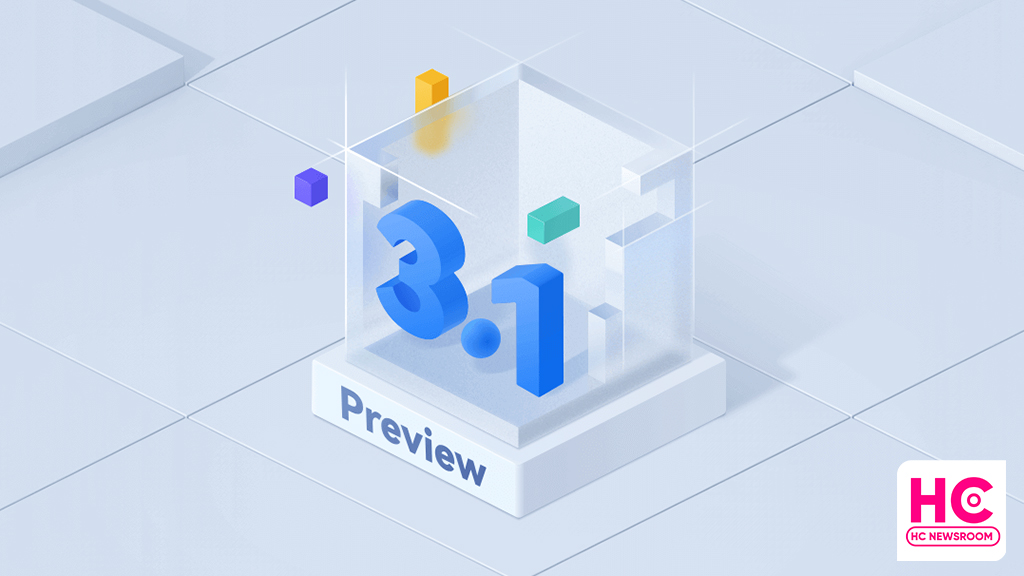
Today, HarmonyOS 3.1 developer preview testing is opened for smartphone users, this recruitment will enable developers to participate in the open beta activity with developer-only features directly into a real device.
According to the information, HarmonyOS 3.1 developer beta is currently being announced for the first phase of devices including Huawei P50 and P50 Pro. However, Huawei has confirmed to add more devices to the test pool later on. Also, a more friendly and subtle beta test is likely to begin in March.
To be mentioned, HarmonyOS 3.1 developer open beta recruitment is applicable until February 13, 2023. Afterward, Huawei will review the test applications. Selected testers will receive an email or SMS to download HarmonyOS 3.1 developer beta OTA rollout.
Also, this beta activity is available only for the Chinese models and only real authenticated accounts will pass the developer beta signup.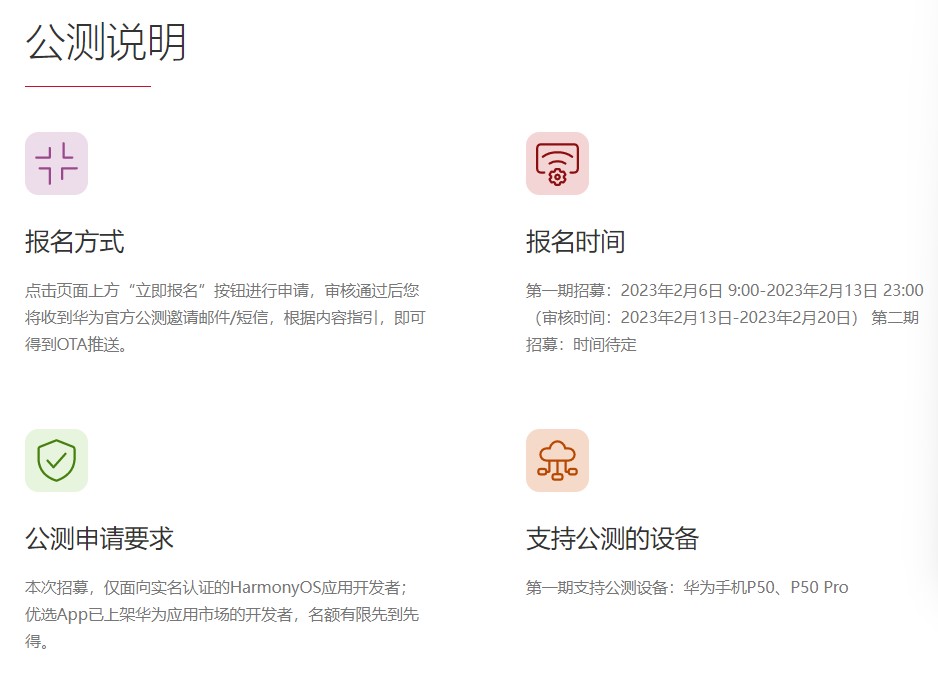
HarmonyOS 3.1 comes constructively adds a new ArkTS language, and with the latest public test, you will experience the improvements and efficiency of the app powered by ArkTS language, STage model, ArkUI, and more.
Below you can check the HarmonyOS 3.1 developer preview features:
- The ability framework adds a stage development model, including stage model life cycle management, scheduling, callback, context acquisition, authentication, and more. At the same time, the operation and management capabilities of the application are enhanced.
- The ArkUI development framework enhances the declarative Canvas/XComponent component capabilities, enhances component layout capabilities and state management capabilities, and optimizes the usability of some components.
- Application package management adds an interface for querying properties related to applications, ability, and ExtensionAbility.
- The common basic class library supports Buffer binary reading and writing.
- Web services add support for document preview and basic editing functions of document-type web applications, as well as cookie management and storage management.
- Added support for YUV, webp image codec, and other capabilities for graphics and images. Added native vsync capabilities, and supports self-drawing engines to independently control the rendering rhythm.
- Added camera configuration and preview functions in Media Services.
- The window service adds window-related interfaces under the Stage model, which enhances the window rotation capability and enhances the avoidance area query capability.
- The globalization service has newly added support for internationalization enhancement capabilities such as time zone lists, transliteration, and phone number attribution.
- The basic capabilities of common events are enhanced, and the commonEvent module is changed to commonEventManager.
- The resource management service adds a synchronization interface for resource acquisition, a new interface for querying resource values based on names, a new interface for querying number and float resource types, and a new way for Stage model resource query.
- Input method service adds input method cursor direction constant.

Android
First Android 14 Developer Beta announced, launch around HarmonyOS 4

Android 14 is the next software version for the Android ecosystem. On February 8, Google stepped ahead to begin the development of this major upgrade with the first developer beta.
Google has released the roadmap for the development, beta testing, platform stability, and the final release of Android 14, which reveals meet the launch of Huawei HarmonyOS 4 later in the second half of 2023.
The first developer preview is already out for the Pixel devices. However, Google could open early access to other smartphone makers such as OnePlus by April when the open beta campaign kicks off.
As mentioned by the Android company, Android 14 is projected to reach platform stability by the end of July. But there’s still a possibility of these milestone timelines to delay, similar to last year.

For your information, the Android 14 developer preview will be a very useful and early gift to the developer community. It will pave a way for the app devs to know more about the upcoming APIs and app features ahead of the final launch.
Looking into the developer preview features, Android 14 promises to improve productivity, enhances performance, improvements to security, and privacy, and bring new customizations.
Yes, there are new tweaks and changes made over Android 12, while there are more that will be visible as the development progress further. Throughout this phase, these developers (and later users) will help to fix bugs and make improvements to the Android 14 source code.
HarmonyOS 4:
Aside from the Android 14 developer beta, Huawei is preparing for the HarmonyOS 3.1 rollout but the company is working on HarmonyOS 4 as a major release for the next generation of Huawei devices. For now, there’s no official launch date available but we are likely to hear more on this at the Huawei Developer Conference (HDC) 2023 event.
HarmonyOS 4 promises big upgrades over HarmonyOS 3 and a major restructure in the user interface (UI). Nonetheless, we’ll keep you posted.

(source – Android)

